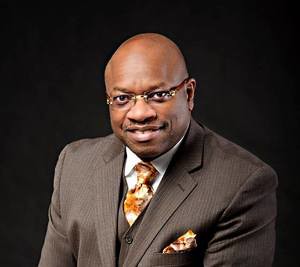Is 20th Ward Alderman Willie Cochran's speedometer broken? This morning, DNAinfo columnist Mark Konkol wrote that Cochran has received three tickets from the same speed camera, near the Midway Plaisance and Cottage Grove in Hyde Park. The cam is located a few blocks west of where a driver struck and injured a young girl last month.
Konkol wrote that Cochran "got pinched," by the camera, and refers to cams as "Big Brother speed traps," implying that there was something unfair about the tickets. Never mind that there are "Speed Limit Photo Enforced Ahead" signs nearby, or that the alderman must have been going at least ten miles over the 30 mph speed limit in order to have been cited.
According to the National Highway Traffic Safety Administration, while most pedestrians struck at 30 mph survive, those struck at 40 mph almost always die. However, Konkol seems to suggest that Cochran didn't have the option of glancing at his speedometer now and then to make sure he wasn't driving way too fast for city streets. As he did last month, the columnist is characterizing Chicago's speed camera program as something that victimizes drivers, rather than protects all road users by discouraging dangerous speeding.
In response to his three tickets, Cochran is thinking locally and acting globally. He has asked the Chicago Department of Transportation to install digital speed indicator signs by all speed cameras in his district, and possibly the entire city. According to a City Hall source, the alderman will likely get a speed feedback sign by the speed cam that ticketed him, Konkol reports.
One issue with Konkol's writing about automated enforcement is that he doesn't seem to understand how significant a factor speed is in traffic deaths. Nationally, 30 percent of all fatal crashes involve speeding, with the vast majority of these collisions taking place on local roads, according to the NHTSA. In Chicago, statistics show that pedestrian crashes that involve a speeding driver are far more likely to result in serious injury or death than those where speeding isn't a factor.
While Konkol characterizes speed cams as a trap, the city of Chicago actually gives drivers plenty of warning about the locations of speed cameras, and the tickets are easy to avoid. Again, each camera already has one or more warning signs placed a couple hundred feet in front of it. When CDOT installs new cams, they issue press releases, which are reported on by local news outlets. The cam locations are available on CDOT's website and via smartphone apps like Waze.
For the first 30 days after a speed camera is installed, it only issues warnings, not tickets. The first time a driver speeds by any camera, he or she only receives a warning, not a ticket. And, as mentioned above, you don't get ticketed unless you're driving 10 mph or more over the posted limit.
Konkol notes that Chicago speed cameras collected $58 million is fines since the city began installing them in 2013. He argues that revenue is the reason the city hasn't put up more feedback signs by the cams, which would give drivers even more advanced warning.
However, the purpose of speed cameras shouldn't simply be to get people to slow down when they drive by parks and schools. Ideally, the cams should reinforce the message that driving 40 mph or higher anywhere on Chicago surface streets is dangerous and will not be tolerated.
Konkol does have one valid point: The city should be studying the speed cameras to make sure they are doing their job to make streets safer, protect children, reduce crashes, and save lives. Fortunately, that's in the works.
In March, Mayor Rahm Emanuel promised that the city will recruit a team of experts to review the Chicago's red light camera program. The panel will also analyze the speed cams, CDOT spokesman Mike Claffey told Konkol.





